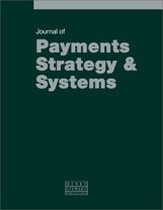Using e-cheques to reduce credit interchange fees: Case study of Carnegie Mellon University
Abstract
Facing increasing interchange fees when collecting student payments via credit card, Pittsburgh-based Carnegie-Mellon University sought a solution that would help them avoid rising costs, streamline and integrate with their current process and still satisfy their important constituents. Working with its trusted cash management provider, The Bank of New York Mellon, the University's decision makers concluded that it could meet most, if not all of its goals, for process improvement and expense reduction by introducing e-check — or Web-based ACH transactions — to its portfolio of payment options. Using The Bank of New York Mellon's Masterfile Payment System, Carnegie Mellon University introduced the new e-check option just over two years ago. Since then, the University has been able to eliminate credit card payments altogether, thus avoiding significant interchange fees and transition its payers to other more cost effective payment methods including ACH, Wire and Lockbox remittances. This article explores how Carnegie Mellon University succeeded in migrating many of its payers to e-checks, including a look at how they designed the system, communicated the change to payers, how the introduction of e-checks affected the use of various other payment alternatives, and what they would do differently if given the opportunity
The full article is available to subscribers to the journal.
